Foundation: Season 2 Case Study

Case Study
Dive into the world of Foundation S2. Discover how Image Engine's visual effects mastery transported Isaac Asimov's world from page to screen – from the minimalist grandeur of the Spacers to the brutalist architecture of Korell.
View portfolio page Watch our breakdown reelFoundation is a dazzlingly ambitious and visually stunning leap into sci-fi, and the streaming service could not have selected a more formidable and sprawling concept for its foray. The show is an adaptation of Isaac Asimov’s seminal science fiction novels, which revolve around the mathematician Hari Seldon and his theory of psychohistory – a mathematical sociology that can predict the future with frightening accuracy, and in this case, the impending collapse of a sprawling Galactic Empire. To save humanity’s collective knowledge and contract the period of chaos to follow, Seldon establishes two “foundations” at opposite ends of the galaxy.
And things explode from there. Foundation’s plot is dense and labyrinthine (as anyone who has read the books will know), sprawling across different time periods and various characters, all set against the backdrop of an Empire on the brink of dissolution.
Foundation season 2 picks up with the aftermath of the developments from the season one finale as the characters cope with the ramifications of Seldon’s predictions. This season probes deeper into the mysteries of psychohistory and its impact on the empire while exploring the tension psychohistory presents between determinism and free will, all across an operatic background of planets, the cosmos, and its inhabitants.
Image Engine played a crucial role in bringing much of this imagery to life. Image Engine’s work on the second season of Foundation involved 223 shots across the season, comprising far-flung planets, spacecraft, and The Spacers.
Creating the Spacers
A large body of Image Engine’s work on Foundation S2 involved the “Spacers” – the descendants of early human settlers of the first fifty planets colonised by humans outside Earth. The characters are known for significantly expanded lifespans, achieved through advanced technology and genetic manipulation, and their superior attitude. Foundation S2 presents the Spacers as godlike beings with glowing eyes and strips of fluorescent circuitry running across their skin.
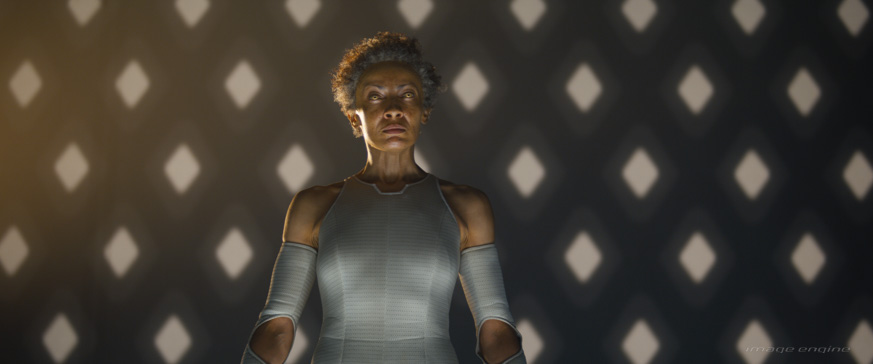

It was up to Image Engine to augment the on-set actors’ look to present the Spacers as the transmundane superbeings they are. The team created wider and smaller eyes, suit replacements, and negative spaces in their torso area to reveal glimpses of the Spacers’ inner circuitry.
“Augmenting the Spacers was complex work, as we wanted to achieve a subtle, photoreal look that augmented the actor’s faces while maintaining their intended performance,” says Jenn Taylor, visual effects supervisor on Foundation S2.
“We combined two methodologies to achieve the Spacer’s look,” she continues. “Firstly, we created full-CG Spacers, then performed roto animation to match the CG Spacer to the on-set actors’ body performance. For example, using hand animation, our team took the actor’s eye, brow, and jaw performances and aligned them to subtle differences in the Spacer model, like the wider set-apart eyes. Secondly, we ran a head track using Keen software, which provided a very tight match to the plate performance, especially around the intricate areas of the mouth and cheeks during dialogue.
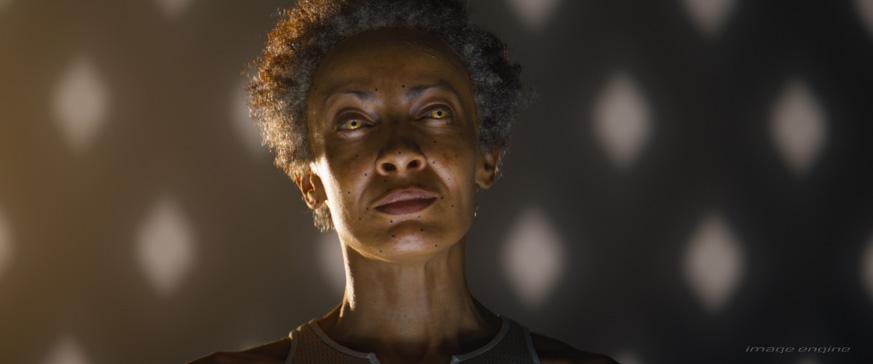
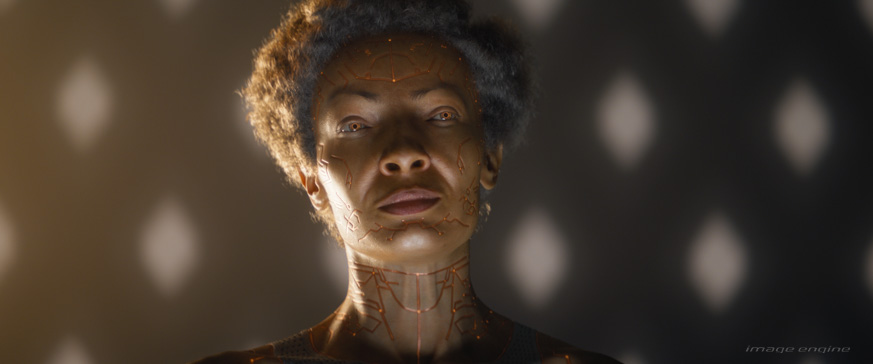
“Following that, we lit both of these geometries, and our compositing team then combined our full CG bodies, two CG heads, and a portion of the plate face for the nose and mouth (and, in some cases, hair) into our final product. The results were exceptional and sold these characters as being something more than human.”
Daniel Bigaj, compositing supervisor at Image Engine, adds that the Spacers presented one of the most technically complex compositing challenges on Foundation S2. “We wanted to show the Spacer’s alien, slightly removed nature while still selling them as real, believable beings. If we achieved that, the audience would retain their immersion in the world that we were creating.
“So, we gave extra attention to the Spacer shots’ details to ensure they matched the original plate photography. We finely tweaked everything down to the sub-pixel tracking issues and aligned the shape of the light on their faces, where doing so could not be achieved perfectly directly outside of lighting. We also manually adjusted almost every shader for every light so we could match plate photography perfectly during these lighting animations. Thankfully, we had excellent motion and lighting references from the original plate photography, which helped us to build a completely imperceptible blend between the CG renders and the original photography. The results were terrific – all that hard work on the Spacers paid off.”
Building “The Centre” mothership
Image Engine also contributed to the look of “The Centre”, the Spacer’s colossal, semi-sentient mothership that looms over the environment at 1.5km in length.
“We were provided with a base 3D model and render studies of The Centre’s huge yet simple and elegant design,” explains Christian Irles, visual effects supervisor. “We then enhanced the ship’s detail, depending on how close our cameras got to it for specific shots. The team retained the craft’s original shape and colour palette while adding finer detail to its structure and lines of light similar to those seen on the Spacer’s bodies.”
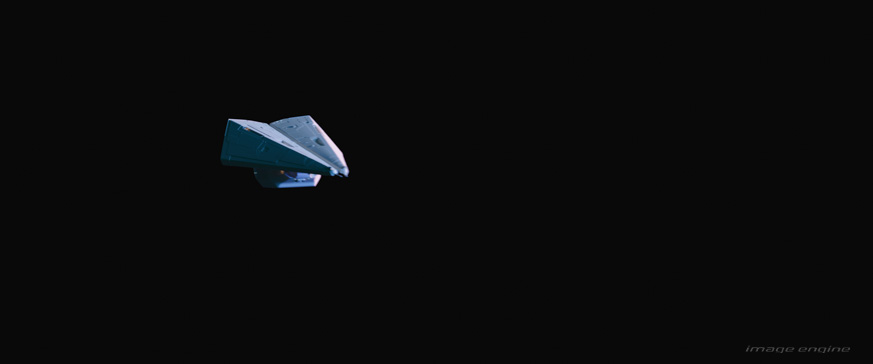
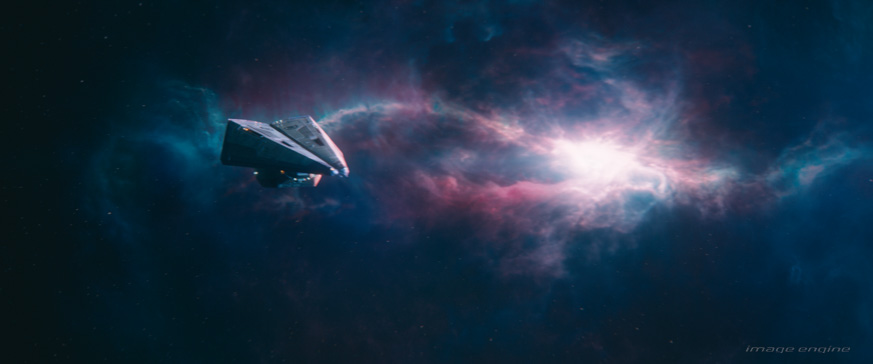
Communicating The Centre’s immense size without landmarks and tangible objects for visual comparison was a challenge the Image Engine team met head-on, as Xander Kennedy, CG supervisor on Foundation S2, explains.

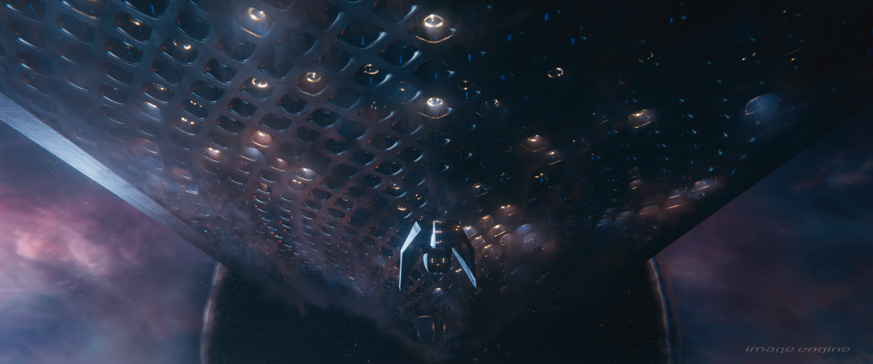
“Our team was acutely aware of the need to communicate the sheer size of this spacecraft – we had to make sure the mothership felt huge even when we had nothing to compare it to other than a starfield backdrop. So, we dived into the intricacies of modelling, texturing/lookdev, layout, animation, lighting, and comp with this in mind and devoted a great deal of time to emphasising the scale of the environment with a sense of awe-inspiring vastness. We delivered many iterations of camera positioning and light direction to ensure we established a setting and look that truly communicated just how big this ship was.”
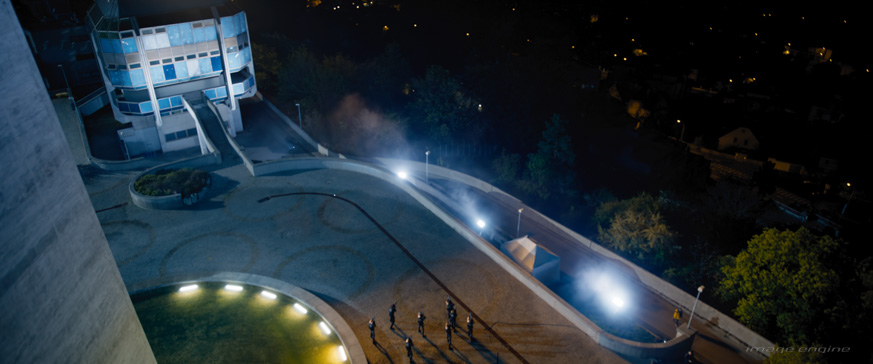
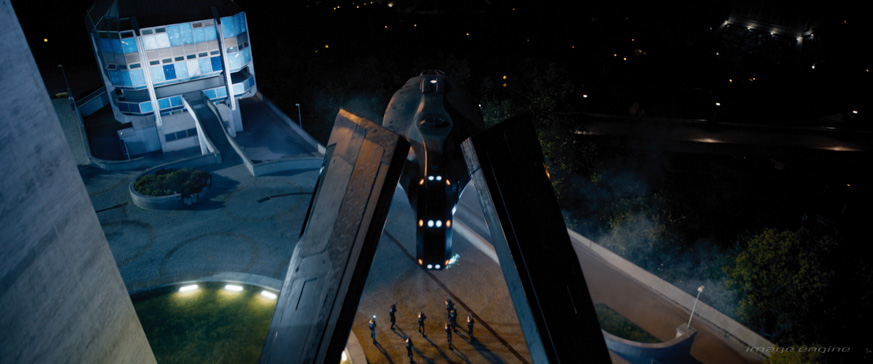
Image Engine also created two other ships for Foundation S2 – the Whispership and the Far Star – the latter being the craft piloted by the master trader Hober Mallow (Dimitri Leonidas).
“For the Far Star, we received an art department concept as a starting point,” says Christian. “Then, working alongside Rob Jensen, one of our internal concept artists, we enhanced the ship’s design and also its look, ending up with a more minimalistic colour palette than the original concept – metallic grey as a base, with green lines running across it. We then moved on to building the ship in 3D.”
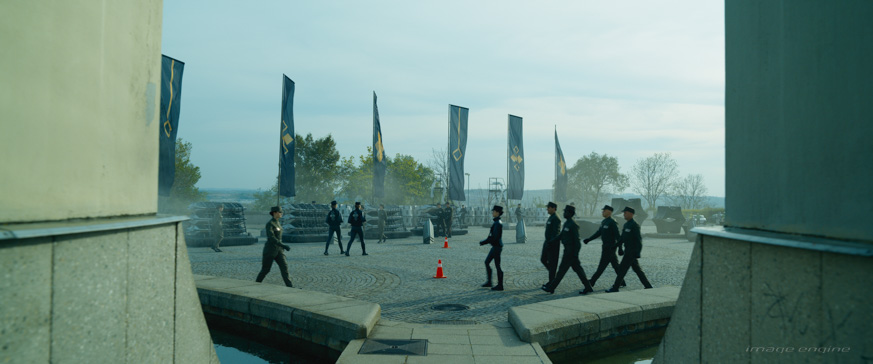
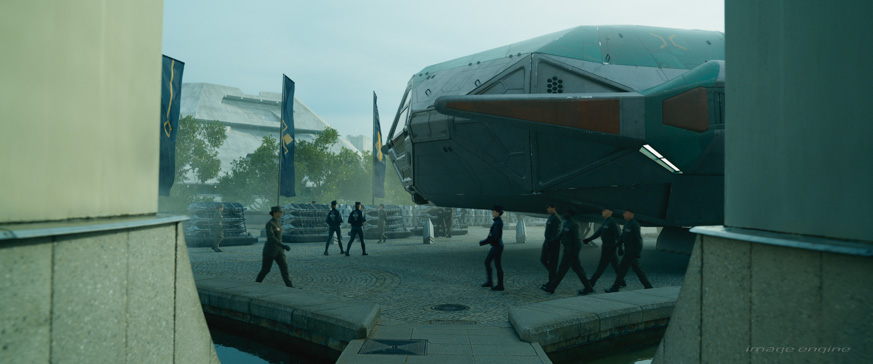
For the shots of the spacecraft in outer space, Image Engine focused on lighting to ensure the sequences had a realistic feel. “Nailing these full CG shots consisted of backlighting the ships and planets, finding the correct amount of ‘bounce’ lighting, and adding lensing artefacts like highlights blooming and lens flares,” says Christian. “We used SpaceX and Nasa photography as a reference to ensure our work looked believable.”
Creating a beast of a ship
To rival the Centre’s vast exterior, Image Engine created the alien-like chasm interior consisting of two enormous, parallel walls covered in pulsing diamond patterns that surround a plinth in the center.
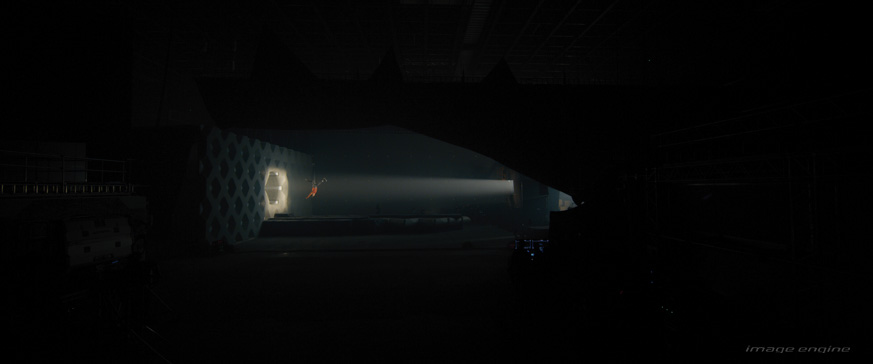
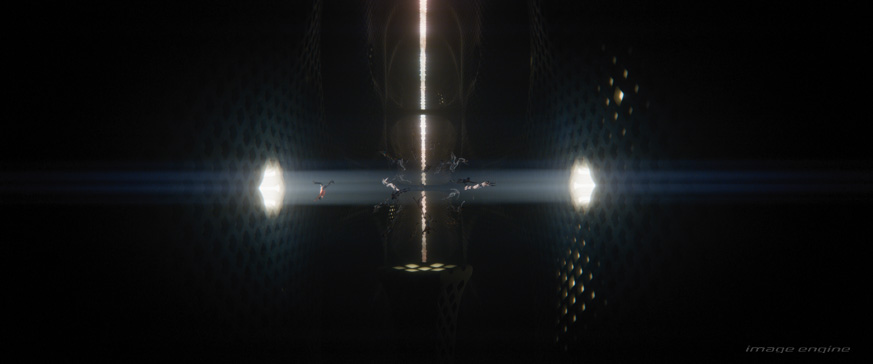
The creation of this intricate interior began with Image Engine receiving a 3D previs model from the art department. This model served as a foundational guide, helping the team grasp the environment’s unique, organic form and scale. Armed with this understanding, Image Engine commenced the process of extending the practical sections of the environment built on set. These included the tunnel Hober walks through, its connecting outer wall, and the upper section of the plinth from which he confronts the Spacers later in the sequence.
“We wanted to create a beautiful organically shaped expanse to sell the scale of the Spacer’s ship, which is immense,” says Christian. “Giving scale to an interior environment as simple, big, and synthetic as this is always a challenge. The plates were a good anchor for haze/depth cueing, although we ultimately replaced the practical set with CG to extend it. Lighting was also key: we used the bright Nebula outside the ship as one of our main light sources to light the undulating diamond walls and subtly define their shape.”
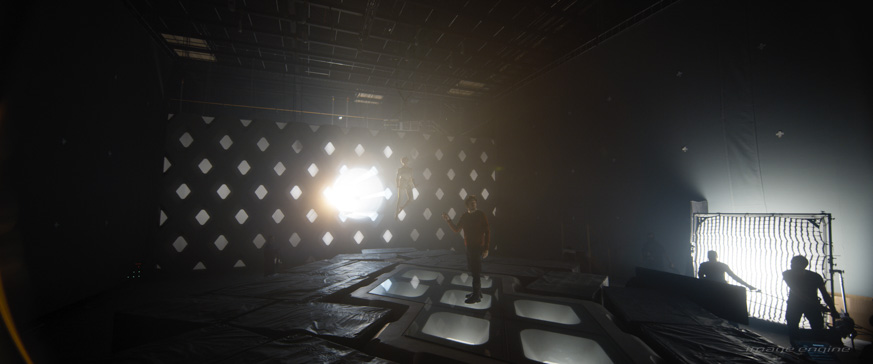
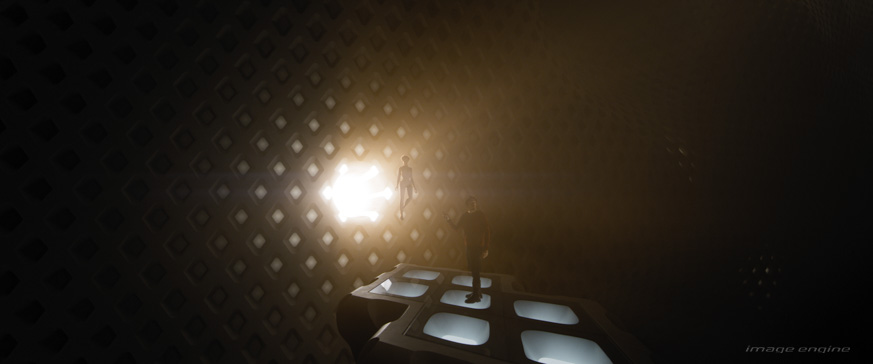
Viewers will notice that the lit diamond patterns on the walls slowly expand and contract in a gentle breathing pattern, subtly communicating the ship itself is a sentient beast watching events unfold. Throughout the sequence, the lights’ intensity, position, and speed correlate to the emotions of the Spacers.
“With all the breathing lights and the organic shapes, the scene inside The Centre instills a sense that the ship is alive, just like the genetically engineered machine/human hybrid Spacers that call the ship their home,” says Daniel. “I love how we achieved this feeling of being inside a giant beast, with the symmetry of the light shaping the inside of the cavern and looking like ribs inside the beast’s chest.”
Heading into hyperspace
Image Engine also created two looks for The Centre and the Whispership’s hyperspace jumps – powerful methods of transport that propel the craft through interstellar space. The effect is stunning: the ships cross through interstellar portals while wreathes of multi-hued smoke peel off their hull into the void of space.
“The first jump look we tackled was the Whispership’s,” says Christian. “Early on during production, we received a proof of concept created by Framestore that featured all the basic ingredients and timings for the jump aesthetic. Our FX team then took over, finessed each layer, and added complexity where required.”
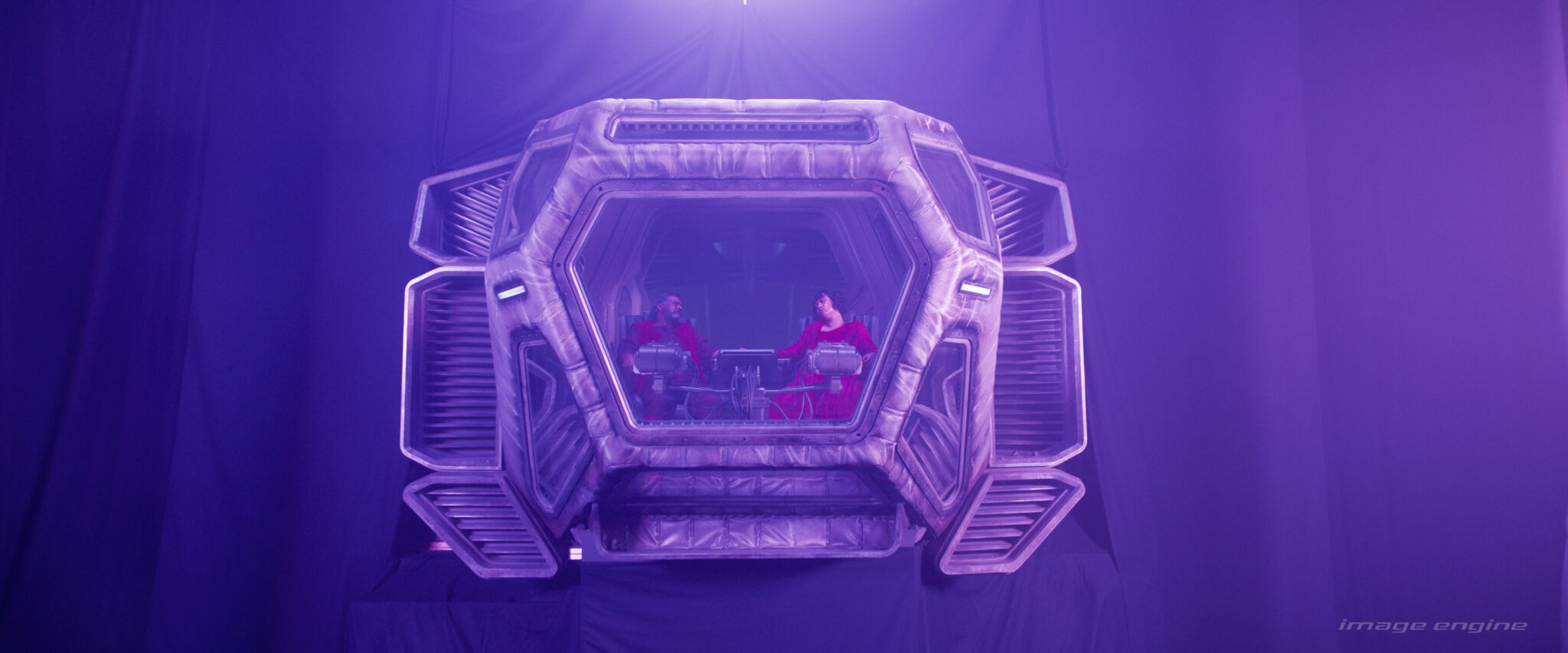
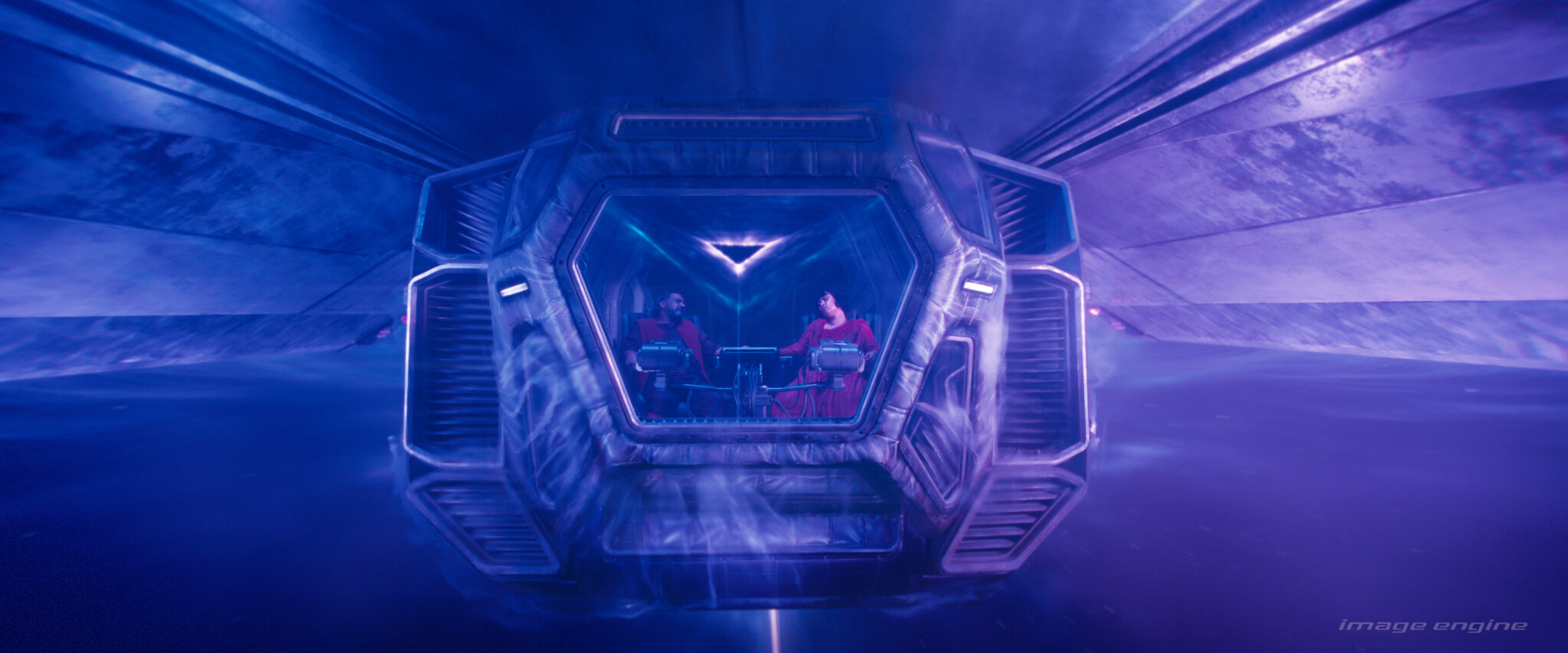
One sequence sees the Whispership jump while The Centre is too close to its portal, causing an explosion. Although The Centre has a protective shield to dampen the destructive force and prevent total obliteration, the jump still generates a pulse of energy that flies through The Centre, knocking people backward.
“What we see on screen for this effect is a combination of complex FX simulations representing the jump itself, the energy it releases as the shockwave comes towards the camera, and its interaction with The Centre’s protective shield and actors,” says Christian. “We also emphasised what the jump energy might do to a camera if one were physically present during such an event by using a large amount of chromatic aberration and distortion.”
The second jump effect developed by Image Engine was The Centre’s. The team referenced the Whispership jump effect while reconfiguring it for the sheer scale of The Centre. “We slowed everything down, from our animation to our FX simulations, like fluids and smoke, to communicate the size of The Centre,” says Daniel. “In comp, we also played with the idea of only seeing the part of the ship that had physically crossed the portal – the rest of the vessel was still hidden/partly in the galaxy from which it was arriving.”
“We achieved the final look of both hyperspace jumps in comp by combining all FX elements, warping the surrounding space as the ship appeared and disappeared, and adding lensing artefacts, as if the jump itself affected the camera sensor,” adds Christian.
Image Engine also worked on various other effects on Foundation S2, including the triangular singularity effect surrounding the Whispership, which was inspired by the look of the singularity effect witnessed in season one. “We achieved the effect by running fast-moving FX simulations around the ship and interacting with it,” says Christian. “We also took inspiration from aerodynamic wind tunnel tests for cars or planes under development and how smoke rolls across those vehicles.”
Blending brutalism and classical architecture in Korell
Another environment crafted by Image Engine for Foundation S2 was Korell – a dictator-run planet in the galaxy’s Whassalian Rift and the location of the third “Seldon Crisis,” i.e., a significant turning point in the future where a wrong decision will spell the ultimate destruction of the Empire.
“Korell was born from storyboards provided by our clients, a verbal brief, and multiple concepts created by our internal concept art department,” says Christian. “The production filmed exterior Korell scenes in Prague, Czech Republic. We retained as much of the original brutal and classical architecture in the photography and enhanced a mixture of classical and brutalist CG architecture, connected via long walkways with a significant amount of vegetation peppered in between.”
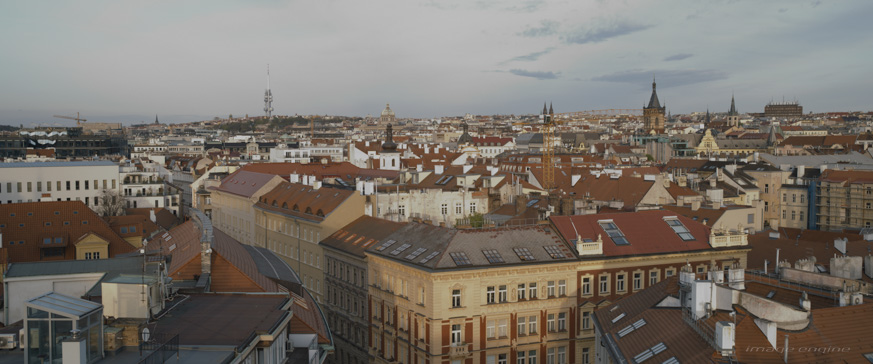
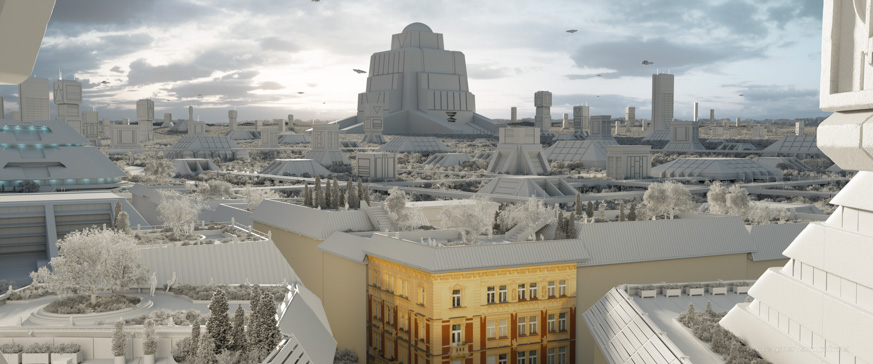
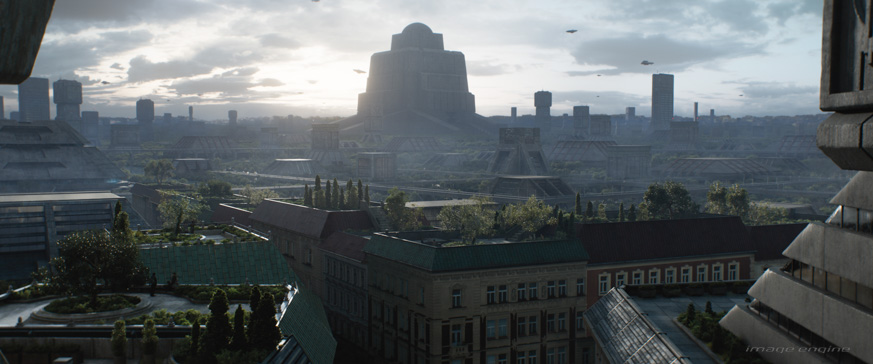
The team struck a balance between imposing brutalist buildings and beautiful classical architecture while also ensuring everything seen in each shot felt like it matched the scale of its surroundings. “We ensured the brutalist buildings felt the correct scale using windows, antennas, flags, dirt, and CG vegetation like trees and plants,” continues Christian. “Last but not least, the addition of CG crowds and flying ships played an important part in making the city and its environments feel alive.”
Bringing Asimov’s imagination to life
Foundation is a story epic in scope. Transitioning the scale of Isaac Asimov’s imagination from page to screen is no easy task, but the show has pulled it off across not just one but two seasons, thanks to the support of the imaginative individuals working at visual effects studios like Image Engine and its co-vendors.
Overall, the second season of Foundation presented a remarkable display of technically demanding visual effects. The collective efforts of all involved succeeded with flying colours, resulting in a stunning array of photo realistic visual effects. Once again, the unwavering dedication and passion exhibited by the team serve as a shining example of Image Engine’s commitment to excellence and the results the studio can achieve when it comes together as a team.

